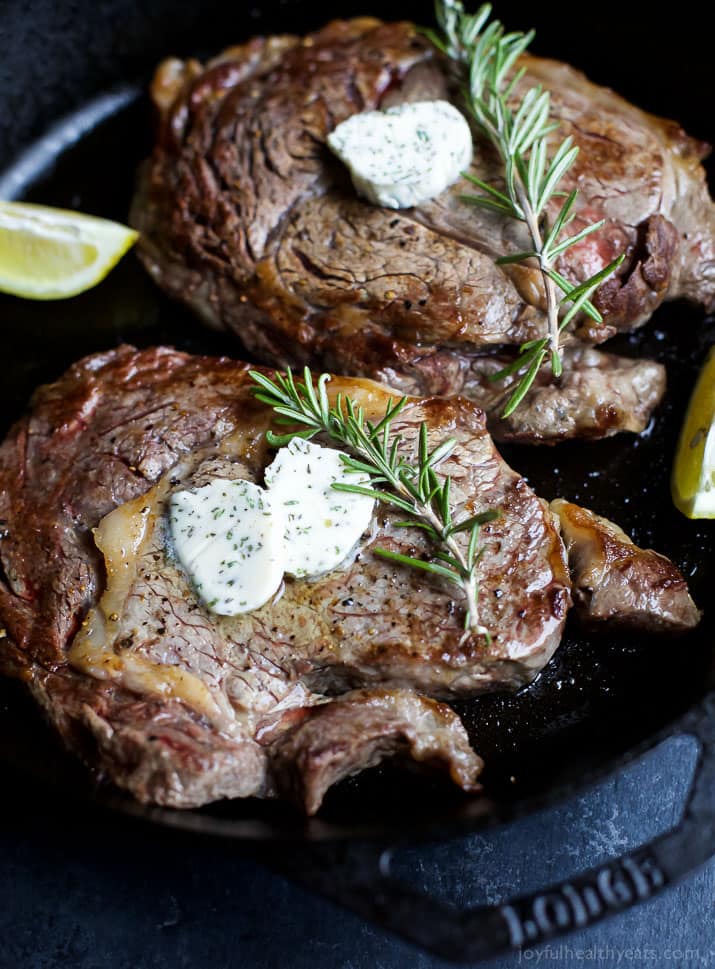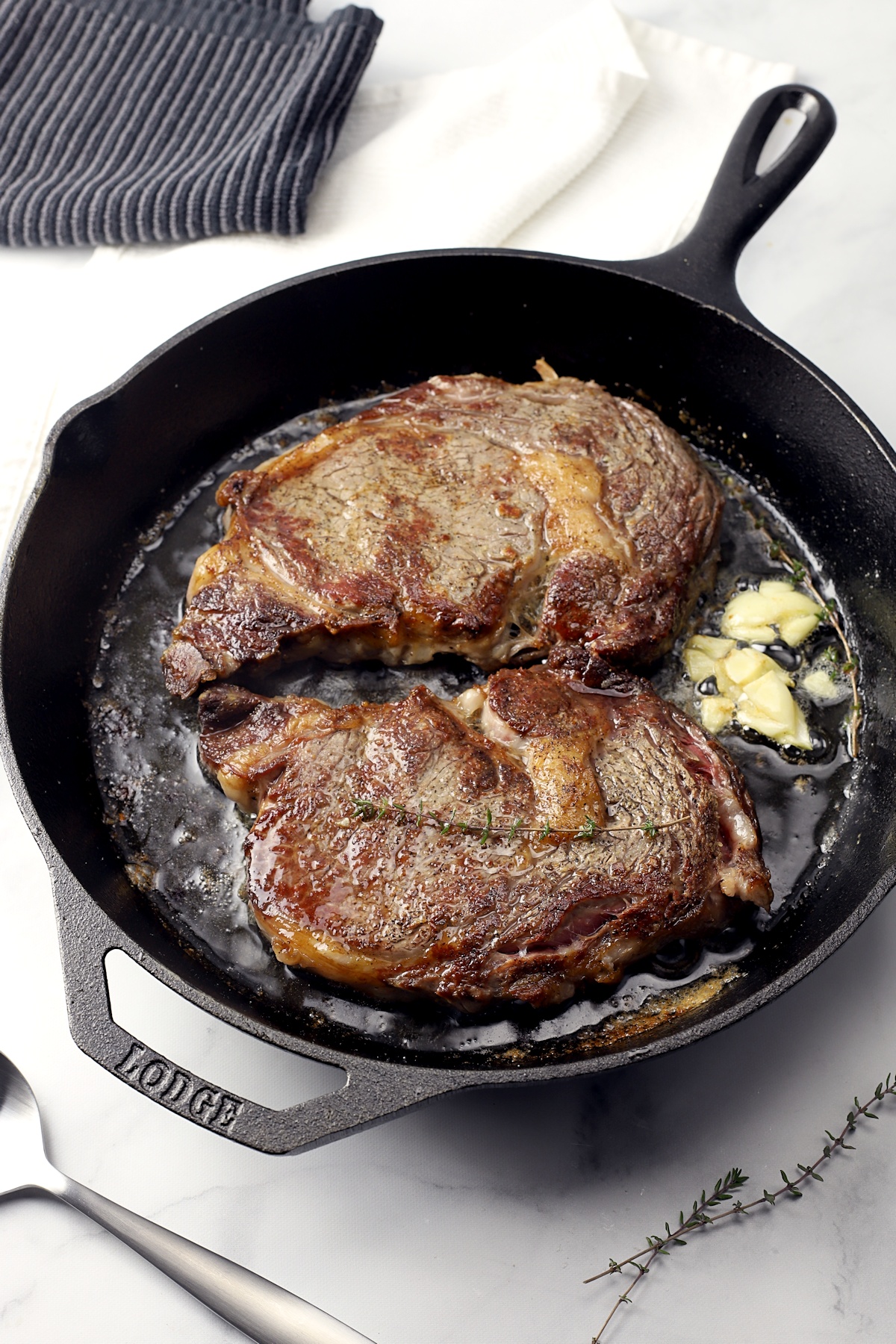
#Pan searing ribeye steaks free
However, feel free to use whatever you prefer.
#Pan searing ribeye steaks professional
Similar to how Brigaid works-by bringing professional chefs into institutional spaces to apply their knowledge to new environments- The Smart Cook intends to do the same by bringing Chef Dan's experience and knowhow into your home with delicious recipes prepared on a budget.If you live in a climate where grilling steak year-round is impossible then this is how you want to cook it! This is hands down the easiest way to cook steaks. Brigaid chefs bring their experience, knowledge and technique to institutional kitchens to improve food quality.

The best part? All 3 dishes cost under $3 a serving.Dan Giusti, formerly the head chef of Noma, is the founder of Brigaid, a company that places professional chefs into institutional food spaces like public schools. Watch as Dan prepares a day's worth of meals, each elevating frozen cauliflower you can find at your supermarket from the ordinary to something nutritious and delicious. Letting the meat rest produces the juiciest steak, and that is what we are going for, amirit? Use this time to set the table, finish that side salad, pour yourself a glass of wine, whatev.Ĭhef Dan Giusti is back with the next episode of The Smart Cook, this time showing us what's possible with some frozen cauliflower and a little inspiration. Although you will be tempted to eat it immediately (trust me, I know), set the plate aside for 5 minutes for thin steak, 10 minutes for thick. When the steak is glistening brown and cooked to your preferred doneness, transfer it to a plate and loosely cover with aluminum foil. After the butter melts, tilt the pan and use a spoon to spoon the flavored butter it over the steak, allowing the flavors to infuse into the meat. butter into, along with some aromatics, such as thyme or rosemary branches, bay leaves, smashed garlic cloves, or sliced shallots. During the last 2 minutes, toss in 1-2 Tbsp. Butter adds that rich, delicious finishing flavor, but if you add it too early, it will burn during the high heat of the steak cooking. To add even more flavor when cooking thicker steaks, add a bit of butter and aromatics (like herbs and/or garlic) to the pan during the last 2 minutes of cooking. Add Butter and Aromatics if you want to get fancy A cast-iron pan holds and retains heat especially well, helping to brown the steak more evenly.įor thicker steaks, cook until meat is deeply browned and an instant-read thermometer inserted into the thickest part registers 120° for medium-rare or 130☏ for medium, 8-12 minutes total depending on desired doneness, adjusting heat to medium if the steak seems to be browning too quickly and flipping the steak halfway through cooking (more on the last couple minutes of cooking below). To sear the steaks, you're going to want to grab a 12-inch cast-iron pan, or the heaviest 12-inch stainless steel pan you've got. Note: Only season your steaks right before you're about to cook them, since the salt will start drawing out liquid from the steaks if they sit around for more than a few minutes. If you're cooking thin steaks, you can also add chopped herbs like oregano, thyme, or rosemary-and/or minced garlic-to the steaks now for larger steaks, leave the aromatics for later. Pat the steaks dry with paper towels, then season the steaks well with salt and pepper on both sides use 1/2 tsp.


Season the Steaks Fearlesslyīefore you get cooking, you've got to dry those steaks off moisture is the enemy of that perfect glistening brown crust. And if you're interested in trying something new (and a little more affordable, wohoo!), try one of these alternative cuts, like a shoulder tender (a great filet mignon sub). If you want to cook a thinner steak, look for flank, hangar or skirt steak. For thick cuts-such as ribeye, strip steak, or T-bone-choose steaks that are 1 1/2 to 2 inches thick for maximum juiciness. The pan-sear method will work for either thin or thick steaks.


 0 kommentar(er)
0 kommentar(er)
